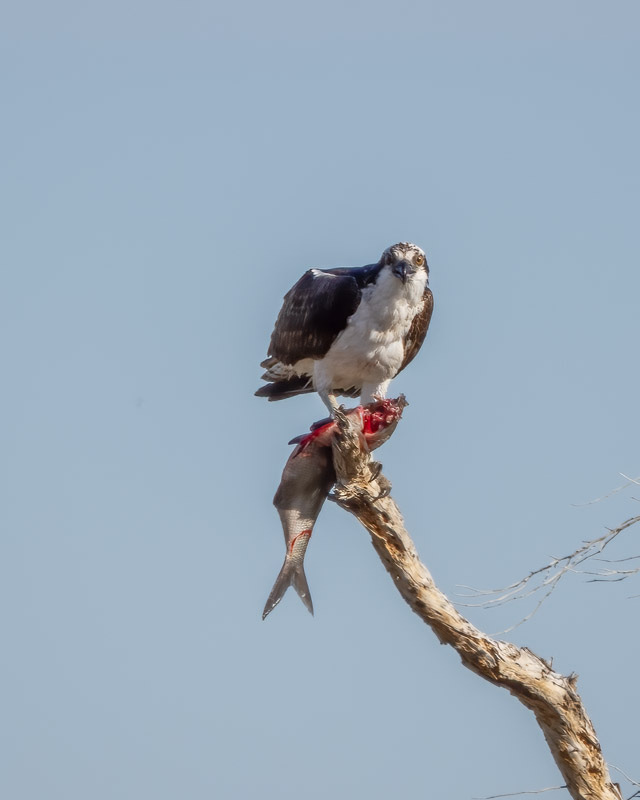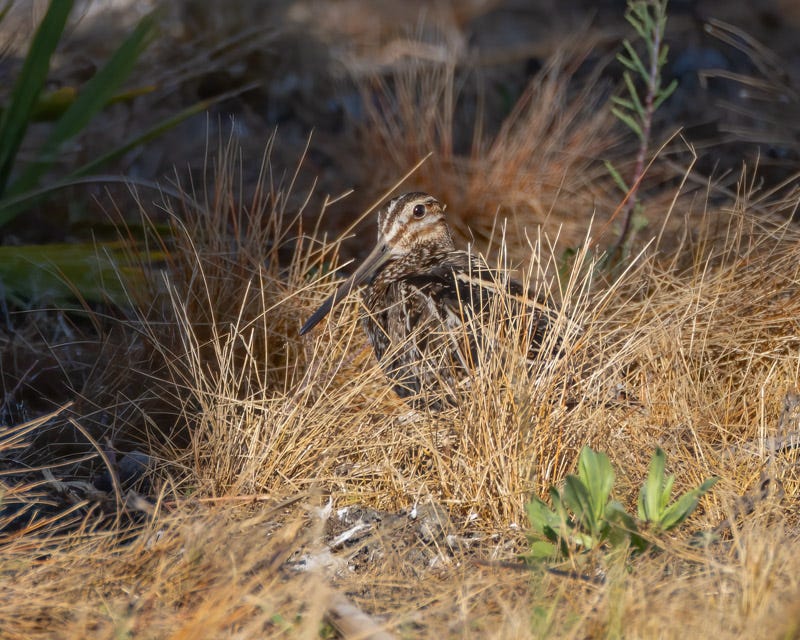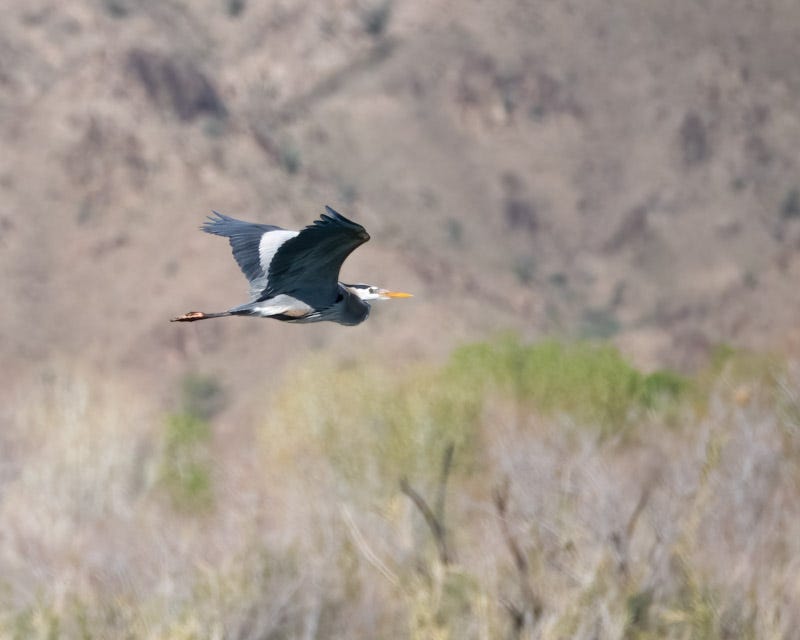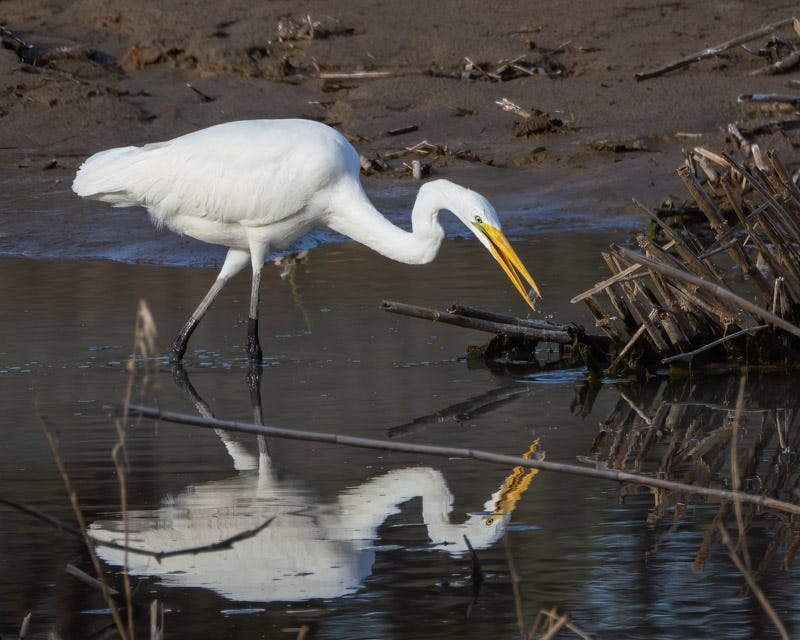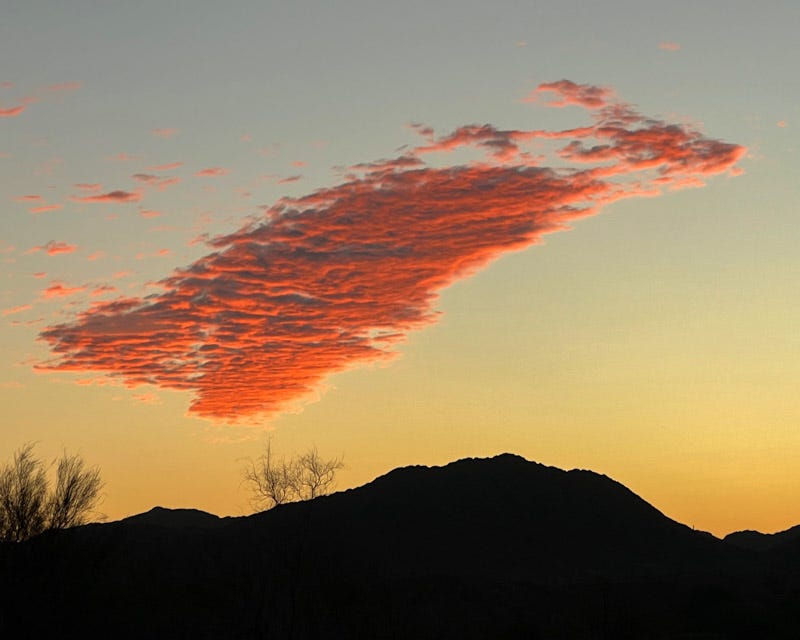The Rest of Day Two in Yuma
It was a very busy day
There is a dirt road that wanders the outer edge of Mittry Lake. As we rounded a curve, we spotted an Osprey, unique among North American hawks for its diet of almost exclusively live fish. This Osprey definitely captured a good meal. As surprised as we were to come across this bird, it was equally surprised to see us and quickly took off flying towards the north carrying its catch.
We reached the end of the road around Mittry Lake and turned around, heading back south around the lake. At the boat dock, the Grebes were still present. Here is one Western Grebe riding above the water. Western Grebes are known for their unusual breeding behavior. It's too bad that we couldn't see this- just too early in the season!
Western Grebes have a long, crisp black and white neck. From allaboutbirds.org "Western Grebe plumage is very dense and waterproof. In the nineteenth century the birds were hunted and their hides used to make coats, capes, and hats that cost as much as luxury items made from mammal pelts."
A bit south of the boat ramps were several man-made jetties, used for fishing from. We surprised a Wilson's Snipe that flushed from the grasses on the shore and then landed in the grasses on a nearby jetty. The eyes of a Wilson's Snipe are set far back in its head. That allows the Snipe to look behind it for predators while it is searching for food with its long bill buried deeply in the mud.
A Great Blue Heron flew over the lake on its way to a "better fishing spot". Great Blues are the largest herons in North America. With a wingspan of 6 feet and a length of 3-4.5 feet (bill to tail), they only weigh 5 or 6 pounds.
On our drive back to the city, we passed farm field after farm field. They were strangely devoid of birds. There was one Northern Rough-winged Swallow seeming to stand guard between two fields.
After a late lunch, we drove to the Colorado River at a spot adjacent to the Yuma Territorial Prison State Historic Park. There is a nice trail on the river bank there which meets up with the Gila River a few miles upstream. An Osprey soared past us on the way upstream. This was our third sighting of an Osprey that day. I imagine it was not the same one we had seen earlier in the day but you never know. It was actively hunting but didn't dive as we watched it.
Further upstream, a Great Egret was hunting along the river bank and found something to eat. Great Egrets hunt in classic heron fashion, either standing immobile or wading through the water slowly to capture fish with a quick jab of their long, yellow bill.
Ater swallowing that tidbit, the Great Egret continued its slow walk along the river bank. That long, S-curved neck allows the Egret to reach out quite a distance when striking prey.
We finished our day and went back to the hotel to await the next morning. We planned to return to Mittry Lake in search of one of our "target" birds, the Black Rail. Allaboutbird.org describes the Black Rail as "one of the most elusive birds in an elusive family".
The next morning offered another fabulous sunrise. Did we find the Rail? The final Yuma email follows with the answer........


